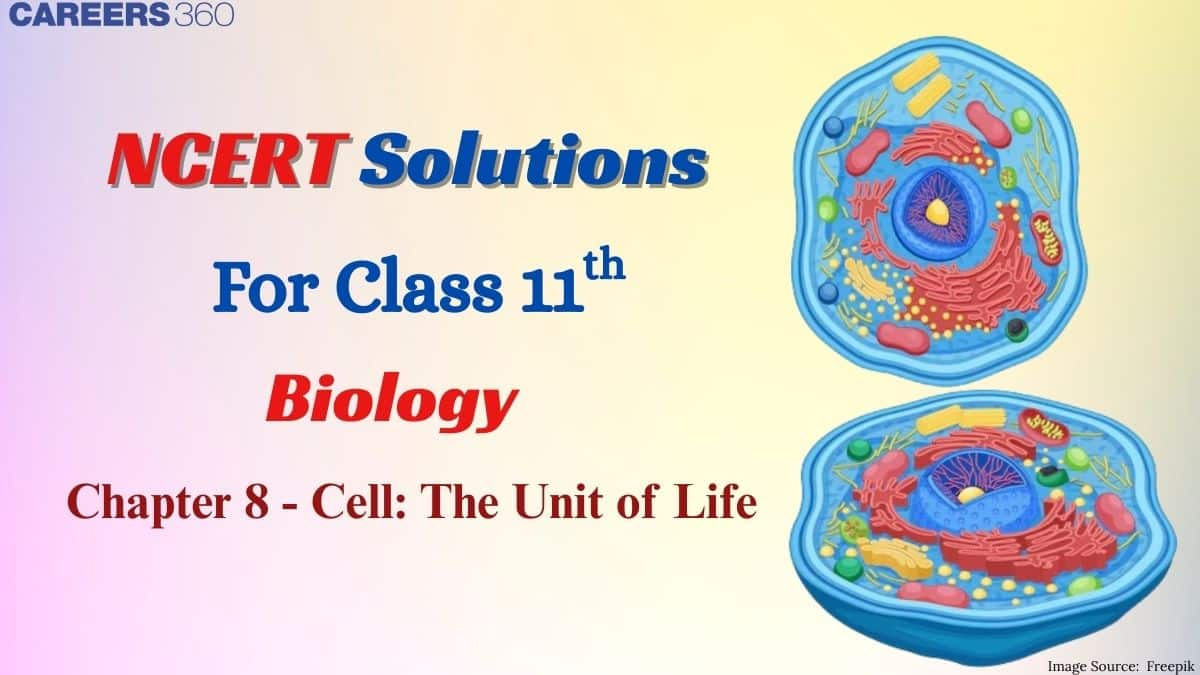Get Class 11 Biology Chapter 8 Cell: The Unit of Life Question Answer
Detailed answers to all the questions given in the textbook are given below. These are prepared by subject experts in simple and clear language and follow the NCERT guidelines. Students should practice the Class 11 Biology Chapter 8 Cell: The Unit of Life question answer to score well.
Q1. Which of the following is not correct?
(a) Robert Brown discovered the cell.
(b) Schleiden and Schwann formulated the cell theory
(c) Virchow explained that the cells are formed from pre-existing cells.
(d) A unicellular organism carries out its activities within a single cell.
Answer:
Robert Hooke discovered the cell, and Robert Brown discovered the nucleus. Schleiden and Schwann developed the cell theory, which states that all living organisms consist of cells. Virchow contributed to the theory that new cells arise from existing cells. Unicellular organisms perform all their life processes within one cell. So, the only wrong statement is that Robert Brown found the cell.
Hence, option (a) is incorrect. Options b, c, and d are correct.
Q2. New cells are generated from
(a) bacterial fermentation
(b) Regeneration of old cells
(c) pre-existing cells
(d) abiotic material
Answer:
The right answer is (c) pre-existing cells.
According to Rudolf Virchow, all new cells are derived from pre-existing cells by cell division. This is a basic biological principle. Bacterial fermentation, regeneration of ageing cells, and abiotic substances are not the origins of new cells. The notion that cells emerge from pre-existing cells is one of the main components of the contemporary cell theory, describing how life originates and organisms develop.
Q3. Match the following
Column I | Column II |
(a) Cristae | (i) Flat membranous sacs in the stroma |
(b) Cisternae | (ii) Infoldings in mitochondria |
(c) Thylakoids | (iii) Disc-shaped sacs in the Golgi apparatus |
Answer:
The correct matching is (a)- (ii), (b)- (iii), (c)- (i)
Column I | Column II |
(a) Cristae | (ii) Infoldings in mitochondria |
(b) Cisternae | (iii) Disc-shaped sacs in the Golgi apparatus |
(c) Thylakoids | (i) Flat membranous sacs in the stroma |
Q4. Which of the following is correct:
(a) Cells of all living organisms have a nucleus.
(b) Both animal and plant cells have a well-defined cell wall.
(c) In prokaryotes, there are no membrane-bound organelles.
(d) Cells are formed de novo from abiotic materials.
Answer:
The right answer is (c): Prokaryotes lack membrane-bound organelles. Prokaryotic cells, such as bacteria, don't possess a nucleus and other complex internal structures wrapped in membranes. The other answers are wrong because not every cell contains a nucleus (e.g., red blood cells), animal cells don't contain cell walls, and cells don't form by themselves from non-living things.
Q5. What is a mesosome in a prokaryotic cell? Mention the functions that it performs.
Answer:
A mesosome is an invaginated structure created by the plasma membrane in prokaryotic cells. It enhances the surface area for various cellular activities. Mesosome is observed in prokaryotes, mainly bacteria, and is not present in eukaryotic cells. Functions include:
Helping the formation of cell walls.
It is involved in DNA replication and dissemination during cell division.
It helps in cellular respiration by giving a greater surface area to enzymes that are part of the process.
Helps in the secretion of proteins and other molecules.
Q6. How do neutral solutes move across the plasma membrane? Can the polar molecules also move across it in the same way? If not, then how are these transported across the membrane?
Answer:
Lipid-soluble neutral solutes can pass directly through the lipid bilayer of the plasma membrane. This relies on the concentration gradient. Polar molecules cannot cross the hydrophobic lipid bilayer readily. Polar molecules must be assisted through transport proteins. They are either carriers or channels, facilitating the polar molecules to cross the membrane. This can be through facilitated diffusion (passive) or active transport (energy).
Q7. Name two cell organelles that are double membrane-bound. What are the characteristics of these two organelles? State their functions and draw labelled diagrams of both.
Answer:
Two double-membrane-bound organelles are mitochondria and chloroplasts.
Mitochondria: The Cells powerhouse.
- Features: the inner membrane is folded into cristae, which have their own DNA.
- Function: cellular respiration (energy production).
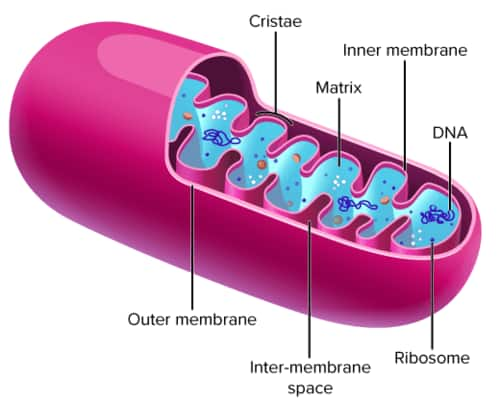
2. Chloroplasts: Present in plant cells.
Features: contain chlorophyll, have thylakoids in grana, and have their own DNA.
Function: photosynthesis (light energy to chemical energy).
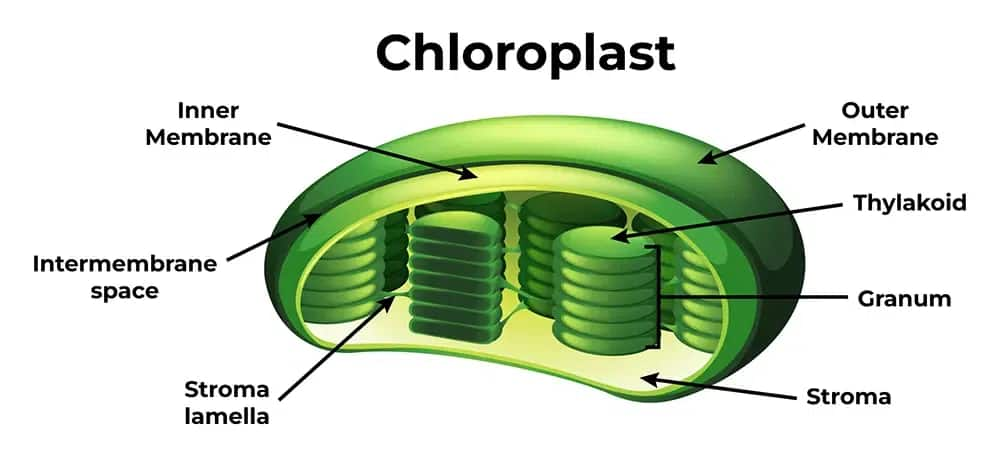
Q8. What are the characteristics of prokaryotic cells?
Answer:
Prokaryotic cells are basic cells without a true nucleus and other membrane-bound organelles. Some of the major features are:
No nucleus: Their DNA is found in the cytoplasm.
No membrane-bound organelles: Mitochondria and endoplasmic reticulum are not present.
Cell wall: Most possess a hard cell wall for protection.
Small size: They are usually smaller than eukaryotic cells.
70S ribosomes: Ribosomes are smaller than those of eukaryotes.
Prokaryotic cells occur in bacteria and archaea.
Q9. Multicellular organisms have division of labour. Explain.
Answer:
Multicellular organisms possess a division of labour, in which different cells specialise in performing some functions. Specialisation results in greater efficiency and overall survival. For example, there are some cells utilised for digestion, others for respiration, and others for reproduction. This division results in greater complexity and the development of organ systems. Instead of every cell trying to do everything, specialised jobs are assigned to different groups of cells so that the organism is able to function efficiently and effectively.
Q10. A cell is the basic unit of life. Discuss in brief.
Answer:
The cell is the fundamental unit of life since it's the smallest unit that can carry out all the functions required for life. All living things consist of one or more cells. Cells give structure, perform metabolic activities, and have genetic material. They can exist independently, grow, and reproduce. Thus, the cell is not only a structural element but also the functional basis of all living organisms.
Q11. What are nuclear pores? State their function.
Answer:
Nuclear pores are openings in the nuclear envelope, the double membrane that encloses the nucleus. They are gateways for the transport of molecules between the nucleus and cytoplasm. Their primary role is to control the transport of materials, letting RNA and proteins enter and exit the nucleus.
Q12. Both lysosomes and vacuoles are endomembrane structures, yet they differ in terms of their functions. Comment.
Answer:
Both vacuoles and lysosomes are endomembrane structures, or membrane-bound organelles that exist in the cell. Their functions are quite distinct, though. Lysosomes contain digestive enzymes that break down waste products as well as cell debris. Vacuoles, on the other hand, are storage sacs that can hold water, nutrients, or waste products.
Q13. Describe the structure of the following with the help of labelled diagrams.
(i) Nucleus
Answer:
The nucleus consists of:
A double membrane is known as the nuclear envelope.
Transport pores are known as nuclear pores.
Chromatin (DNA and proteins).
The nucleolus is where ribosomes are built.
The nucleus regulates cell functions.
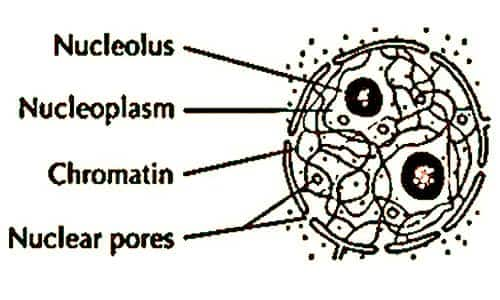
Q13. Describe the structure of the following with the help of labelled diagrams.
(ii) Centrosome
Answer:
The structure of the centrosome is made up of two cylindrical structures called centrioles. These centrioles show a cartwheel-like organisation and both lie perpendicular to each other. A centriole is made up of microtubule triplets that are evenly spaced in a ring The adjacent triplets are linked together. A proteinaceous hub is present in the central part of a centriole. The hub is attached to triplets by means of radial spokes. Centrioles help in the organisation of spindle fibres. It also forms the basal body of cilia and flagella.
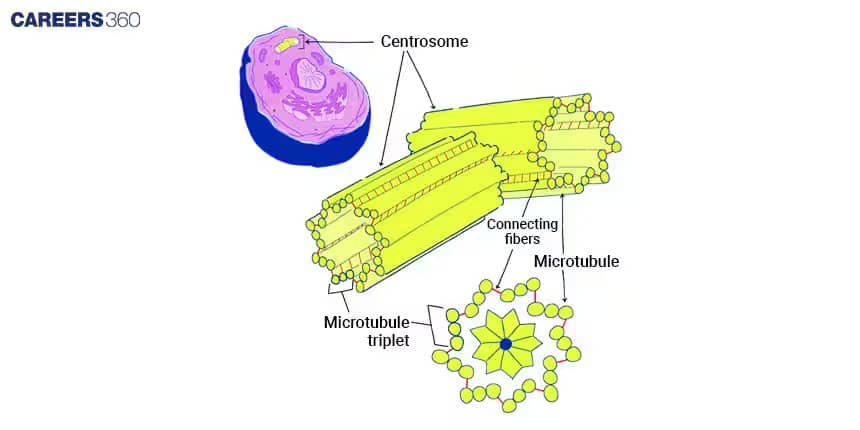
Q14. What is a centromere? How does the position of the centromere form the basis of the classification of chromosomes? Support your answer with a diagram showing the position of the centromere on different types of chromosomes.
Answer:
A centromere is an area on a chromosome where sister chromatids become attached. Centromere position is employed to group chromosomes into four categories:
Metacentric: Centromere in the middle.
Submetacentric: Centromere off-centre, but not much.
Acrocentric: Centromere close to one end.
Telocentric: Centromere at the very end.
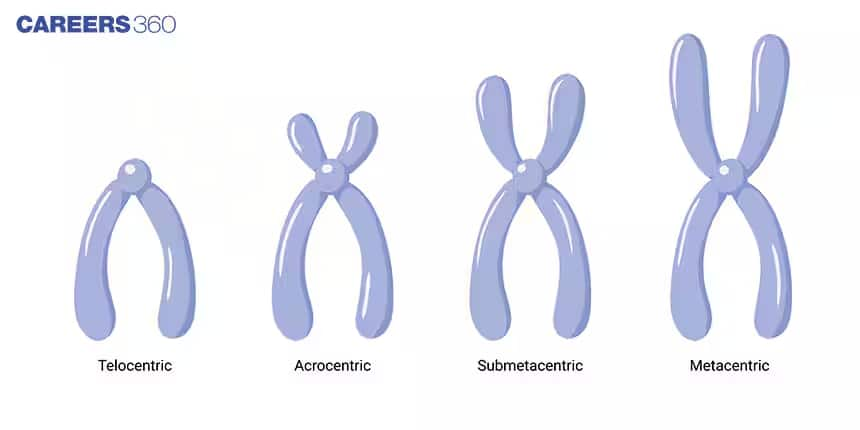
NCERT Solutions for Class 11: Subject-wise
Important Questions of NCERT Class 11 Biology Chapter 8 Cell: The Unit of Life
Given below is an important question from the Cell: The Unit of Life. This chapter is very vast and interesting. Focusing on the questions given in the NCERT Solutions for Class 11 Biology Chapter 8 Cell: The Unit of Life can help students to score well in the exams.
Question 1: In a chloroplast, the site of coupled oxidation-reduction reactions is the
1- Outer membrane
2- Inner membrane
3- Thylakoid membrane
4- Stromal space
Answer:
In the chloroplast, the site of coupled oxidation-reduction reactions is the photosynthetic membrane system, which includes the thylakoid membrane. Within the chloroplasts of plant cells, photosynthesis takes place, and it involves a series of oxidation-reduction reactions. These reactions occur within the photosynthetic membrane system, which includes the thylakoid membrane. The thylakoid membrane is a highly organised membrane system composed of flattened sac-like structures called thylakoids.
Hence, the correct answer is option 3. Thylakoid membrane
Question 2: The stain used to visualise mitochondria is
1- Fast green
2- Safranin
3- Aceto carmine
4- Janus green
Answer:
Janus green is a basic vital stain that is used to demonstrate mitochondria as the oxidation-reduction site in the cell. When the stain reacts with oxygen, it changes its colour to blue. Janus green is taken up by mitochondria in living cells, where it is reduced in the presence of oxygen, turning blue. This colour change serves as a visual indicator of mitochondrial activity and is useful in studying cellular respiration.
Hence, the correct answer is option 4. Janus green
Question 3: Which of the following is not a function of the cytoskeleton in a cell?
1- Intracellular transport
2- Maintenance of cell shape and structure
3- Support of the organelle
4- Cell motility
Answer:
In contrast to intercellular movement, intracellular movement requires the cytoskeleton's microtubules and microfilaments. These structures provide mechanical support, maintain the cell's shape, and enable the movement of organelles, vesicles, and other cellular components throughout the cell.
Hence, the correct answer is option 1. Intracellular transport
Question 4: Which of the following is not true of a eukaryotic cell?
1- The cell wall is made up of peptidoglycans
2- It has an 80S-type of ribosome present in the cytoplasm
3- Mitochondria contain circular DNA
4- Membrane-bound organelles are present
Answer:
The main building block of the cell walls of eukaryotic plant cells is cellulose, a structural polysaccharide. It supports the cell's structure and shields it from mechanical stress from the outside by giving it strength and stiffness
Hence, the correct answer is option 1. The cell wall is made up of peptidoglycans
Question 5: Who proposed the fluid-mosaic model of the plasma membrane?
1- Camillo Golgi
2- Schleiden and Schwann
3- Singer and Nicolson
4- Robert Brown
Answer:
An important turning point in the study of cellular organelles was reached in 1898 when Camillo Golgi discovered the Golgi Complex. All living things are made up of cells, which are the basic building blocks of life, according to the Cell Theory, which was put forth by Matthias Schleiden and Theodor Schwann in 1839. In the same vein, Robert Brown identified the nucleus as an essential part of plant cells in his groundbreaking study from 1831, which gave the first thorough description of the organelle.
Hence, the correct answer is option 3. Singer and Nicolson
Question 6: Which cell organelle is known as the “protein factory” of the cell?
1– Ribosome
2– Golgi apparatus
3– Lysosome
4– Endoplasmic Reticulum
Answer:
Ribosomes are known as the “protein factories” of the cell because they are the site of protein synthesis. They can be found floating freely in the cytoplasm or attached to the rough endoplasmic reticulum. Their main function is to translate mRNA and form polypeptide chains, making them essential for cellular function.
Hence, the correct answer is option 1. Ribosome
Question 7: Which of the following is the largest cell organelle in a plant cell?
1– Golgi bodies
2– Central vacuole
3– Mitochondria
4– Chloroplast
Answer:
The central vacuole is the largest cell organelle in a mature plant cell, often occupying 80–90% of the cell volume. It helps maintain turgor pressure, stores various substances, and contributes to cell growth by expanding in size. Its dominant presence makes it the most prominent structure inside plant cells.
Hence, the correct answer is option 2. Central vacuole
